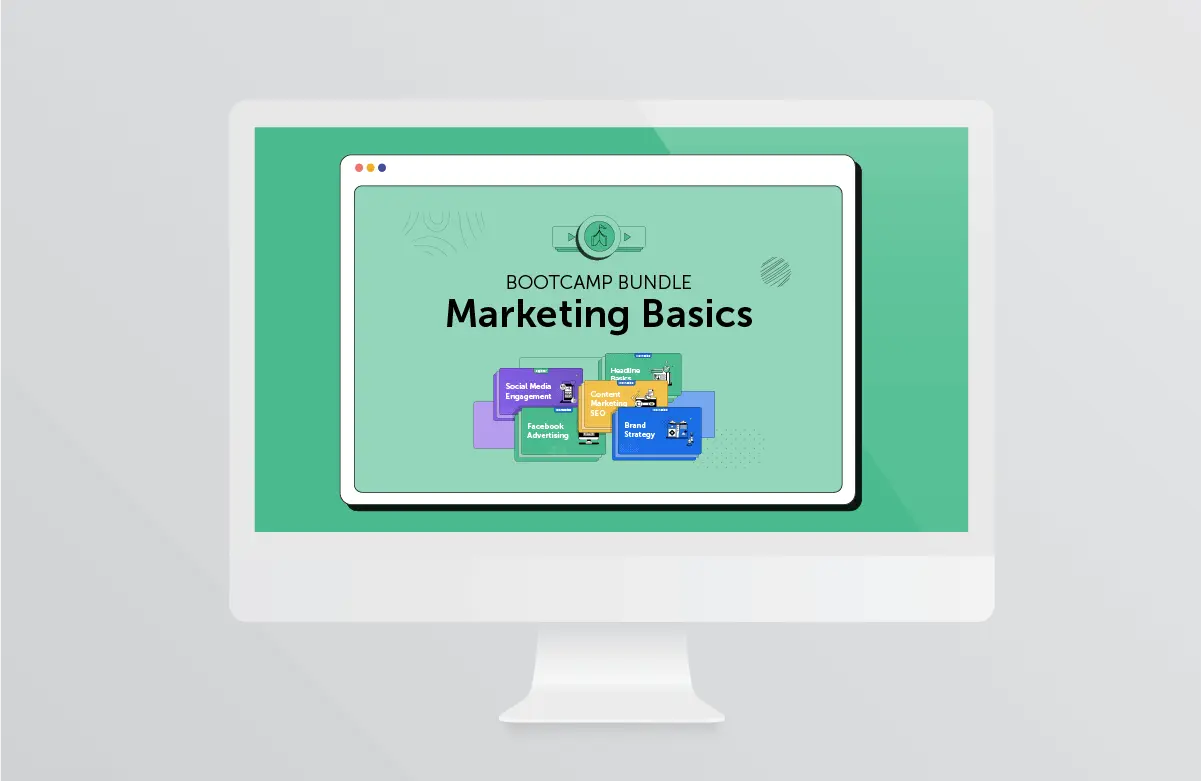SMB Marketing: A Comprehensive Guide for Solo Marketers
 You’re a one-woman show, wearing multiple hats, running your own errands, and hopping in and out of meetings all day.
Between crafting marketing emails and keeping up with social media algorithms, it can feel like your marketing efforts are stretched too thin.
But what if you could put together a comprehensive SMB marketing plan that fits your busy schedule?
You absolutely can have it all. With a little bit of reading about common types of SMB marketing and some time spent putting together your plan, you can have a solid marketing path that will increase your brand awareness and boost conversions.
You’re a one-woman show, wearing multiple hats, running your own errands, and hopping in and out of meetings all day.
Between crafting marketing emails and keeping up with social media algorithms, it can feel like your marketing efforts are stretched too thin.
But what if you could put together a comprehensive SMB marketing plan that fits your busy schedule?
You absolutely can have it all. With a little bit of reading about common types of SMB marketing and some time spent putting together your plan, you can have a solid marketing path that will increase your brand awareness and boost conversions.
SMB Marketing: A Comprehensive Guide for Solo Marketers by @JuliaEMcCoy via @CoSchedule
Click To TweetDownload: SMB Marketing Calendar Template
Plan and organize all your marketing projects in one place with this downloadable SMB marketing calendar template (Excel).Your Comprehensive Guide to SMB Marketing for Solo Marketers: Table of Contents
SMB Marketing Channels for Solo Marketers Step-by-Step Guide to a Comprehensive SMB Marketing PlanWhat Makes Small Business Marketing Different?
As a small business marketer, you have some unique challenges: 1. You're probably strapped for resources. Running lean and efficient is the name of the game. 2. It's unlikely you have much help. You're a one-person team wearing all the marketing hats for your company. 3. And you just might feel overwhelmed. When the whole world is on your shoulders (or at least everything marketing within your organization), it can feel like a lot. Fortunately, this post will help you make sense of it all. For a quick refresher, start with this straightforward but informative Slideshare deck from Sahar Consulting that covers the basics of SMB marketing. Then, read on to learn how to put together a plan that will help you get organized and start making sense of your marketing.SMB Marketing Channels for Solo Marketers
Your SMB marketing plan should be as multifaceted as possible – but this doesn’t necessarily mean you need to master every marketing channel. Rather, you need to be selective in choosing channels that you’re able to strategically integrate and optimize. Knowing how different SMB marketing channels impact your business gives you power in making the right decisions:- When it comes to social media in your SMB marketing plan, create a platform that allows your customers to engage with your business which can encourage them to buy up to 40% more from your company.
- Omnichannel marketing – that is, integrating your channels for a seamless brand experience – can be a significant asset to your company’s bottom line. Customers who have a positive shopping experience came back within six months for additional products and services 23% more often than with single-channel SMB marketing.
- The most commonly used SMB marketing tool is email. It is used by over 50% of small businesses in their marketing plans, and it’s one of the most cost-effective methods of communicating with your customers.
1. Content Marketing
Content marketing is a broad SMB marketing channel that includes your website and blog, one of the best ways to drive traffic to your site.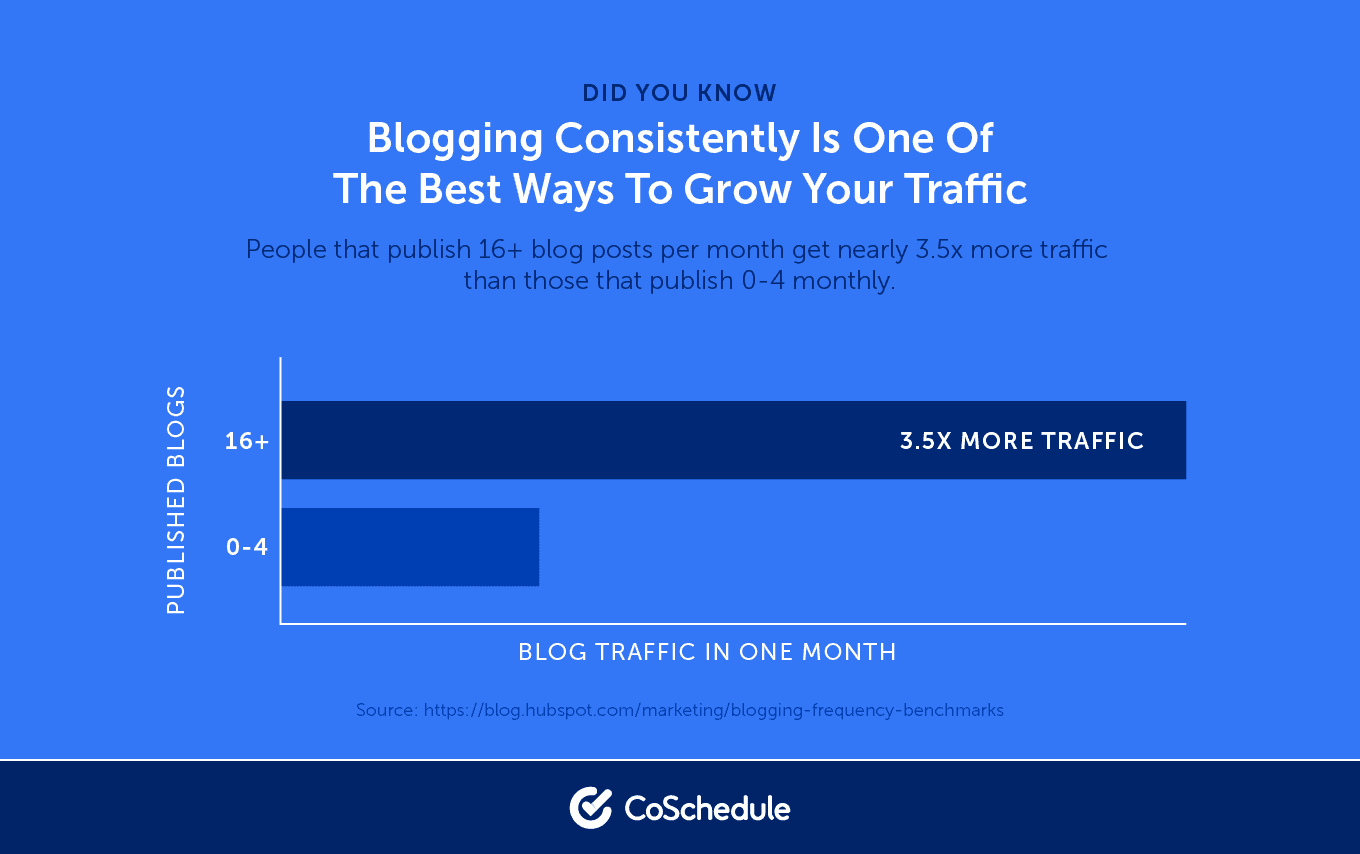 Source: CoSchedule
Some people may think it’s limited to blogs and landing pages, but content marketing is much bigger than that.
Content includes a variety of media that can be published online:
Source: CoSchedule
Some people may think it’s limited to blogs and landing pages, but content marketing is much bigger than that.
Content includes a variety of media that can be published online:
- Case studies
- Ebooks
- Videos
- Podcasts
- PowerPoints
2. Email Marketing
Email is an incredibly effective marketing tool. Not only is it relatively inexpensive, virtually everyone has some basic access to email (there are nearly seven billion email accounts!) This makes it one of the most prevalent forms of communication in the world. But capitalizing on that SMB marketing channel takes some diligence and effort. There are some best practices to follow that will boost your email marketing success:- Segmentation: Segmented email campaigns drive opens. Customers are 75% more likely to open segmented emails.
- Mobile: People are increasingly using their mobile phones to open emails. In fact, at least 60% of email opens happen on a mobile device.
- Remarketing: Your existing customers are ripe for opportunity. Nearly 100% of consumers are interested in hearing from the companies they purchase from by email.
3. Social Media Marketing
Marketing for small business has come a long way in the last decade. With more social media apps than ever, small businesses and solo marketers have access to people in a way they’ve never experienced before. That makes social media marketing a critical part of any SMB marketing plan. Some of the most common social media platforms used in SMB marketing include: While not every business will use all of these platforms regularly, having access to these channels is crucial. Instagram, for example, has a significant web presence: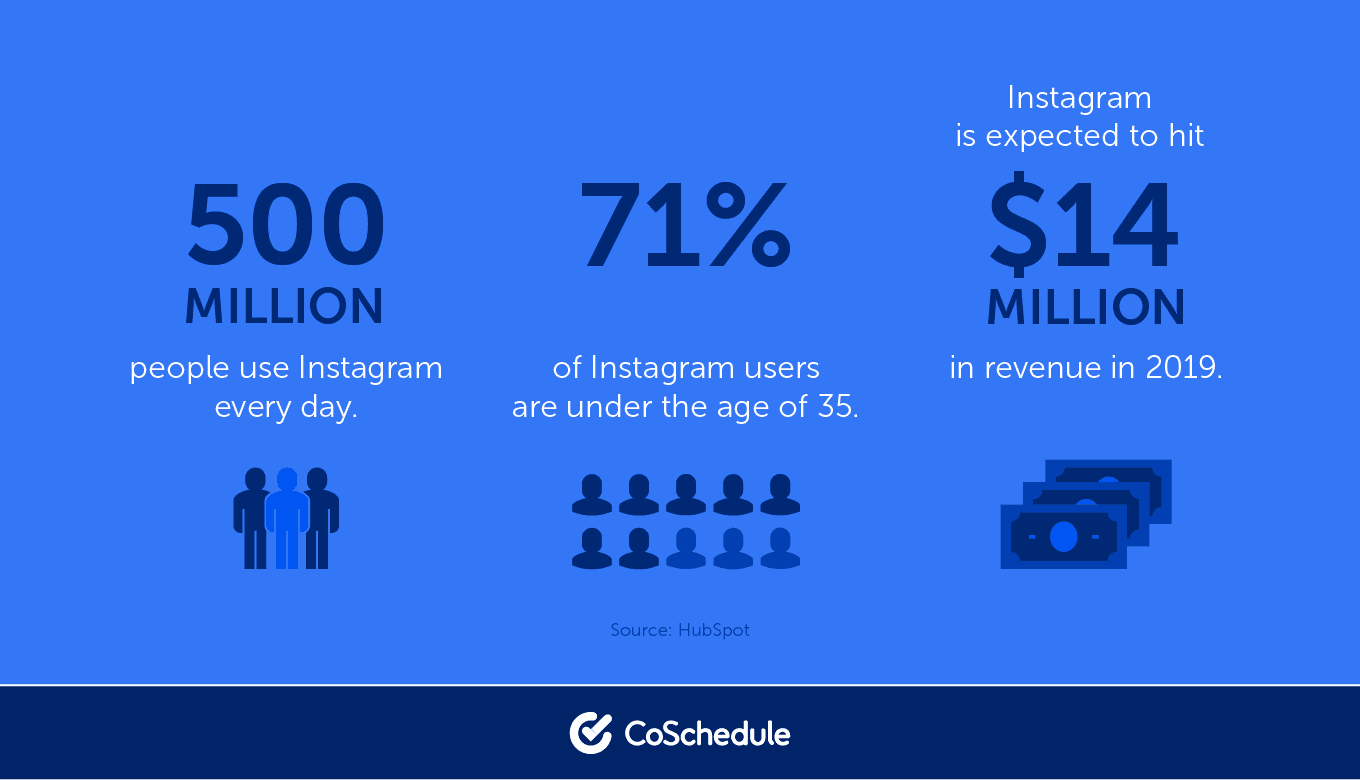 Source: Hubspot
Being able to market to those 500 million people is a path to increased revenue—the goal of any SMB marketing plan. Craft unique, effective hashtags and share valuable insight with your followers.
Source: Hubspot
Being able to market to those 500 million people is a path to increased revenue—the goal of any SMB marketing plan. Craft unique, effective hashtags and share valuable insight with your followers.
4. Search Engine Optimization
Search engine optimization (SEO) goes hand in hand with certain types of written content. For the most productive SMB marketing strategy, incorporate SEO into your blogs and landing pages. Here are some tips on using SEO effectively:- Research your competitors: You can figure out what types of services are missing, where your business differentiates from them, and what keywords to use when marketing to your customers.
- Use keywords naturally: Don’t try to throw them into every sentence and paragraph if it doesn’t make sense. Work them into your title and use them a few times throughout your content.
- Post consistent, valuable content: It can be tempting to crank out as many pieces as possible but creating practical content that provides your customers with a service is a better path to success.
5. Paid Ads
One SMB marketing channel that shouldn’t be overlooked is paid advertisements. Paid ads can come from a number of sources and there are a few types of ads that may be useful:- Display ads
- Social media ads
- Video ads
- Native ads
- Search engine marketing
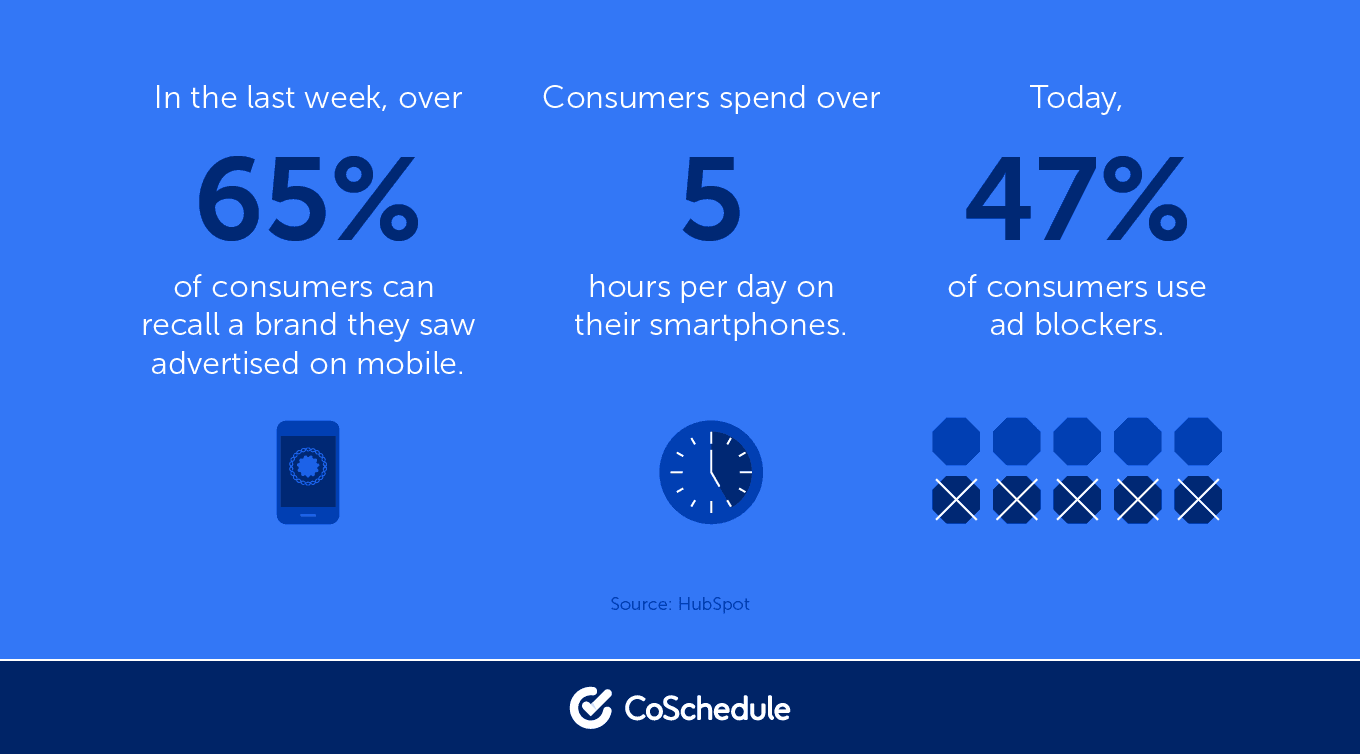 Source: HubSpot
Before you take this route though, it’s important to do some research on your target market. If your customers spend a lot of time using mobile devices and social media, for example, consider focusing on social media ads in your SMB marketing plan.
Source: HubSpot
Before you take this route though, it’s important to do some research on your target market. If your customers spend a lot of time using mobile devices and social media, for example, consider focusing on social media ads in your SMB marketing plan.
Step-by-Step Guide to a Comprehensive SMB Marketing Plan
SMB marketing as a solo marketer doesn’t have to be a chore. Like your business plan, putting together a comprehensive marketing plan for small businesses is a crucial first step in driving growth.1. Research Your Market
First thing’s first: Before you ever put together a comprehensive SMB marketing plan, it’s critical that you research your target market. What is the age range of your current customer base? Where do they live? How do they find your shop or services? Start by taking a look at the profile of your current customers. Don’t have a lot of info on them? Send out a survey. Ask a few quick questions and emphasize that this is helping you serve them better. You should also do some research on your industry. Find out where companies like yours stand with respect to demographics and work that data into your strategy. Knowing your market means you’ll spend your marketing dollars more effectively – you can target people like your customers rather than setting up ad campaigns for the general population. You can optimize your SEO to match the keywords people are already using to get to your services. For additional guidance, this video from Wondertree Media explains exactly how to do this:2. Evaluate Your Website and Brand
Let’s face it: We live in a digital world. Any business that doesn’t have a website is missing out on incredible SMB marketing potential. But an optimized website is better than just throwing something together, so evaluate what you’ve already built and see where you can make improvements. A key place to start is optimizing your content – update your blog and page titles, check that you’re using the best keywords still, and do some analysis on what’s been working best for your site. If you haven’t updated your website in a while, make sure your site is responsive. Not only does Google recommend this, but it offers a user-friendly experience across multiple platforms. An article from Forbes highlights how important your brand is: “Customers need to hear your message several times, so brand, brand, brand!” And don’t forget about the importance of a mobile-optimized website, something that can really boost your conversions outside of SMB marketing.3. Choose Your SMB Marketing Channels
You don’t have to try every marketing channel at one time. In fact, that’s probably not a good use of your time. Instead, read through the channels listed above and see which ones make you 1) excited to learn, and/or 2) excited to do something you already know how to do. Are you already good at writing? Start with optimizing the SEO on your website and your blog posts. Do you present well on camera? Use content marketing to your advantage and create video content that your customers will love. Use the skills you have, then tackle the next SMB marketing channel.4. Set Up an SMB Marketing Calendar
If you already use a web-based calendar to track your schedule, you’re ahead of the curve on this one. Set up a dedicated SMB marketing calendar that you access on a daily basis. This infographic from CoSchedule points out the importance of scheduling your marketing campaigns: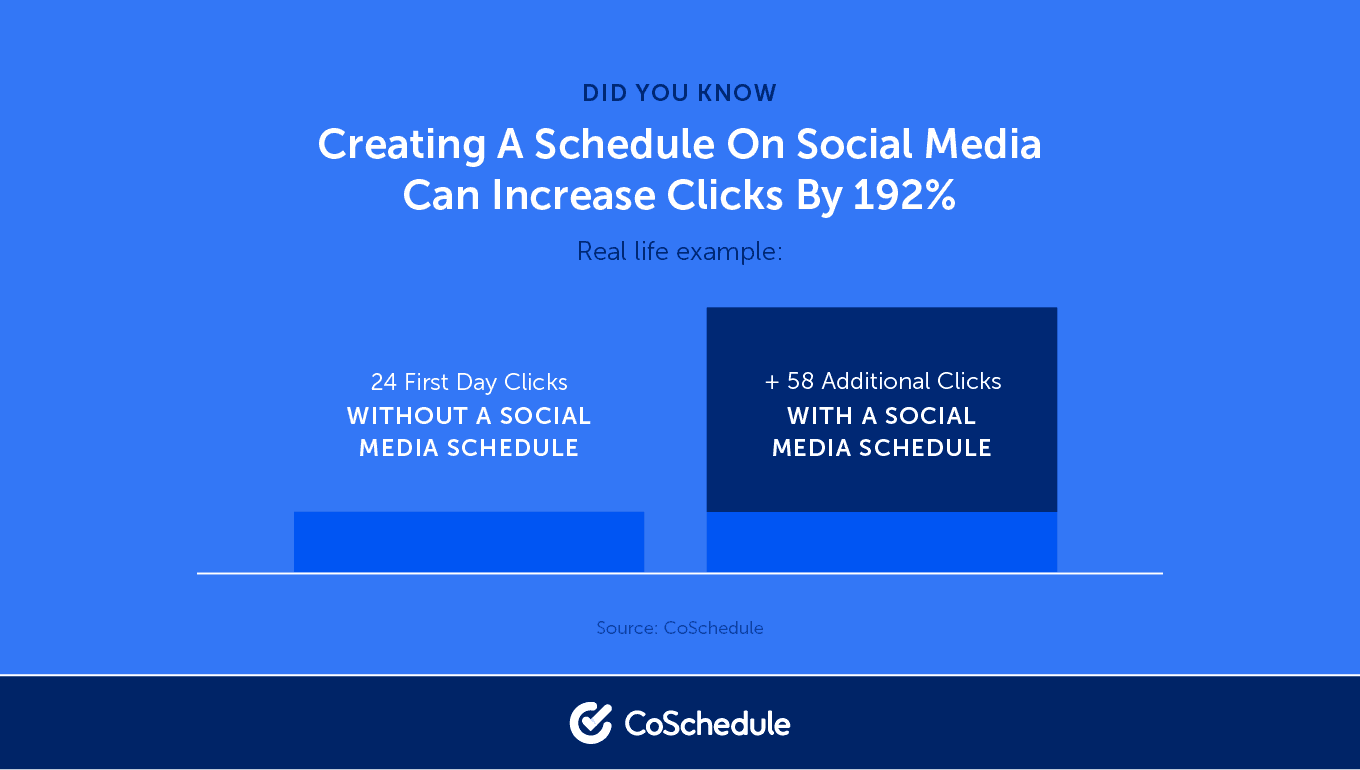 Source: CoSchedule
Sure, you could combine it with your regular calendar, but as your marketing plan expands, you’ll want a schedule that has room for growth.
Now, hold yourself accountable. Get in the habit of scheduling your marketing activities for the week (or even the month or quarter!) and checking the calendar daily so you don’t miss anything.
Source: CoSchedule
Sure, you could combine it with your regular calendar, but as your marketing plan expands, you’ll want a schedule that has room for growth.
Now, hold yourself accountable. Get in the habit of scheduling your marketing activities for the week (or even the month or quarter!) and checking the calendar daily so you don’t miss anything.
How Your Business Can Benefit from SMB Marketing Tools
If this all seems a bit overwhelming to take on by yourself, don’t be alarmed. You’re not the only one who’s ever felt that way! One of the great things about our digital age is the number of SMB marketing tools available to solo marketers. You can find an app or extension for just about any aspect of your business. SMB marketing tools cover a variety of categories, including:- Email automation: With all of the email marketing statistics you’ve read, one thing that hasn’t been discussed is how critical email automation is. SMB email automation platforms can help you schedule and properly time your campaigns for maximum conversions.
- Social media: You could post and analyze across all of your various social media platforms. OR, you could get a social media SMB marketing tool that will allow you to create, edit, schedule, and analyze your data from one dynamic platform.
- Content marketing: When it comes to your blog posts and newsletters, content marketing tools can help you put together consistent copy and keep your SMB marketing calendar on track. And if you ever want to grow your business, they can grow with you.
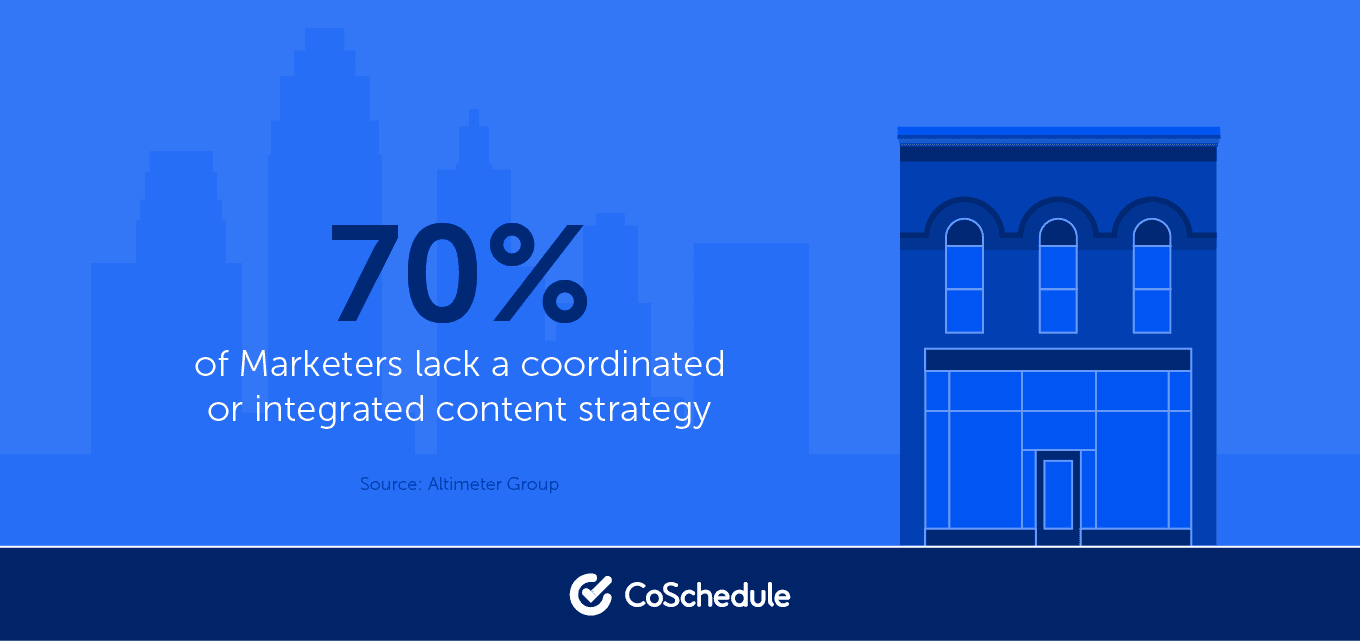 Source: CoSchedule
With only 30% of businesses using a cohesive content strategy, you can easily set your business apart from the competition with a little bit of effort.
Source: CoSchedule
With only 30% of businesses using a cohesive content strategy, you can easily set your business apart from the competition with a little bit of effort.
SMB Marketing for Solo Marketers: The Missing Piece
Whether you just started your business, or you’ve been around for some time and are looking for growth, SMB marketing for solo marketers is your path to success. You can increase conversions through emails or ramp up your brand awareness through social media. Build a strong foundation in marketing basics to help drive more growth & revenue. Enroll in Actionable Marketing Institute’s Marketing Basics Bootcamp to learn proven best practices & strategies (including video tutorials and templates) that will help your small business marketing efforts pay off. You’ll confidently tackle SEO, social media strategy, branding, blogging, & so much more! For a limited time, blog readers can enroll for only $59 (a $149 value) with code SMB at checkout.